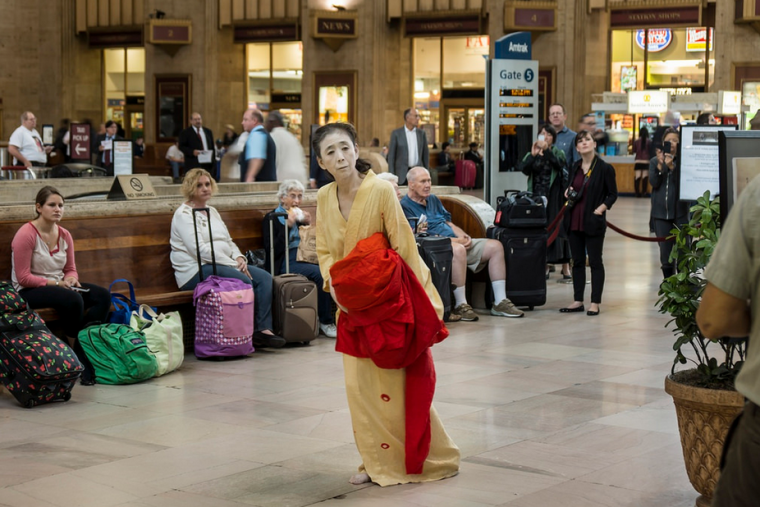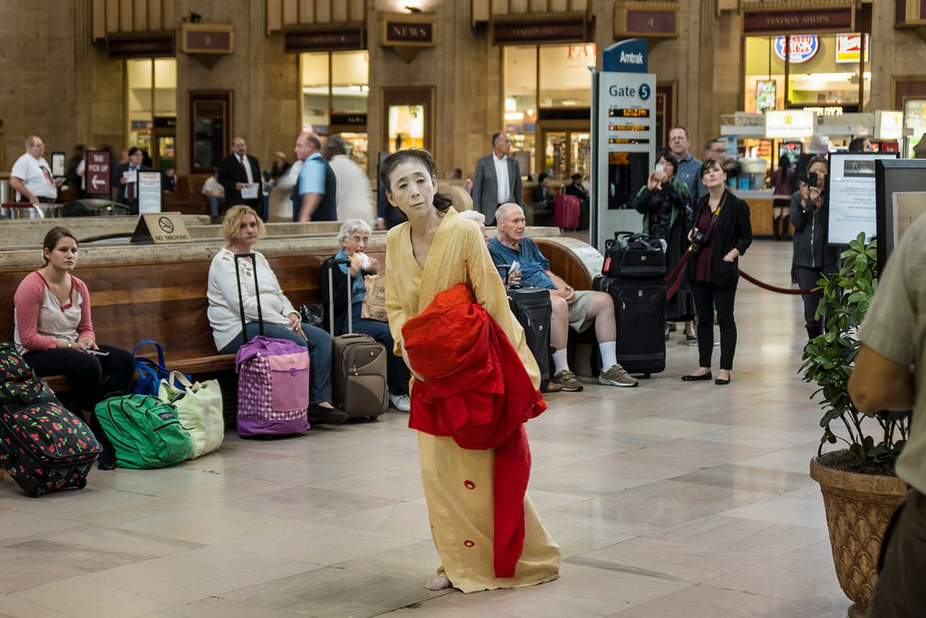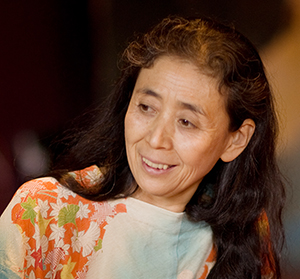Choreographer Otake Begins 3-Year Appointment with Seminar, Exhibition


Japanese-born choreographer/dancer Eiko Otake, visiting instructor in dance, recently accepted a three-year appointment in the Dance Department and College of East Asian Studies. Otake has a 13-year performance history at the Center for the Arts, which began with a three-hour performance of “Offering,” Eiko & Koma’s response to 9/11, in the Ezra and Cecile Zilkha Gallery. Since then, Otake has visited campus many times as a Center for Creative Research Artist-in-Residence, and then as a Wesleyan University Creative Campus Fellow to teach, to offer workshops, to curate events, and to give lectures.

Since 1972, Otake has collaborated with Takashi Koma Otake in creating a unique theater of movement out of stillness, shape, light, sound, and time. Eiko & Koma have received two New York Dance and Performance Awards, or “Bessies,” as well as Guggenheim, MacArthur and United States Artists Fellowships. They have also received the Samuel H. Scripps American Dance Festival Award and the Dance Magazine Award for “Lifetime Achievement in Modern Dance.” In 2012, Eiko & Koma were among the first round of artists selected for the Doris Duke Performing Arts Awards.
“We are delighted to have Eiko at Wesleyan for an extended stay,” said Andrew Curran, dean of the Arts and Humanities Division and director of Curricular Initiatives. “Her classes — which bring together movement, politics and history — are among the most sought after within the entire curriculum. Eiko has also been a bridge among numerous faculty and departments, creating long-lasting links among different parts of the university community.”
In the spring of 2015, Otake will teach an interdisciplinary seminar called “Delicious Movement: Time is Not Even, Space is Not Empty.” The course will cover literature on the atomic bomb, post-war Japan, and environmental violence, including the Fukushima nuclear explosions, and will have students contemplate metaphorical nakedness and human and bodily experiences of time and space. In 2014, Otake and long-time collaborator William Johnston, professor of history, professor of East Asian Studies, professor of science in society, made two extended visits to Fukushima, Japan. They went into areas severely affected by the explosions of the Daiichi plants, which were damaged during the massive earthquake and tsunami that hit the northeast Japanese coast in 2011.
“In placing my body in these contaminated places, I danced again in mourning and remorse,” Otake said. Over 70 haunting photographs from this trip are the basis of Otake and Johnston’s exhibition “A Body in Fukushima,” which will be displayed in all three Wesleyan art galleries between February and May 2015, the first time that the three galleries have collaborated on the presentation of a single exhibition. In conjunction with the exhibition, Eiko will perform a series of work-in-progress solo performances, a part of her “A Body in Places” project, in various non-theatrical and “odd” locations across campus. The performance schedule will be announced later this fall.
“A Body in Fukushima” was co-commissioned by Wesleyan University and the Pennsylvania Academy of Fine Arts, Philadelphia; made possible by funds from the Doris Duke Performing Artist Award, the Japan Foundation, the Center for the Arts Creative Campus Initiative and the Office of Academic Affairs, Wesleyan University. “A Body in Fukushima” will also be exhibited at the Pennsylvania Academy of Fine Art, Philadelphia, and the Galleries of Contemporary Art, University of Colorado at Colorado Springs before traveling to Wesleyan.
An artist conversation and opening reception will be held in all three galleries from 5 to 7 p.m. Feb. 5.

